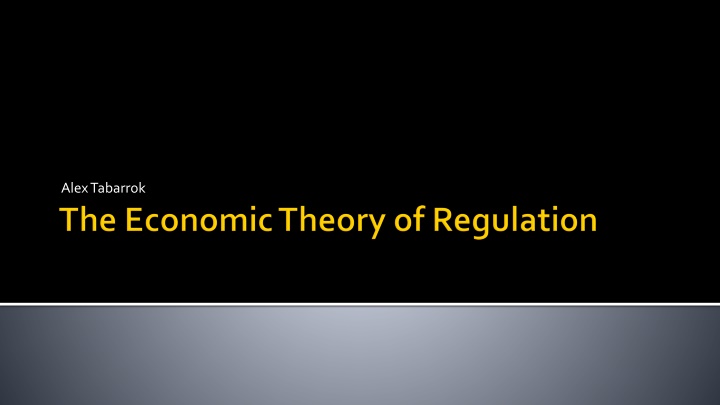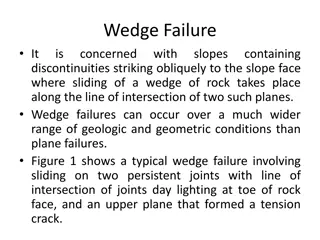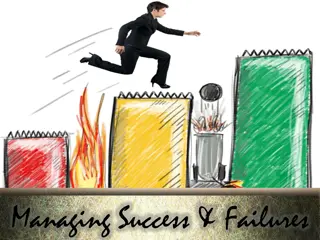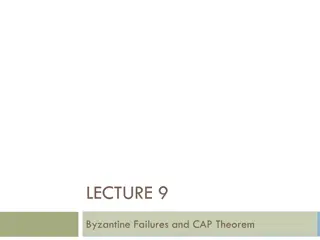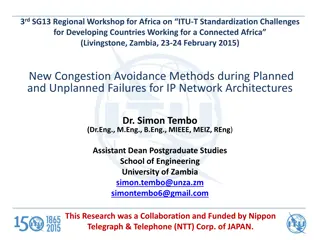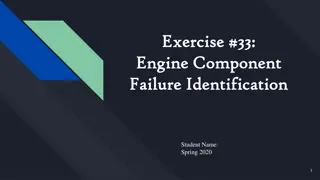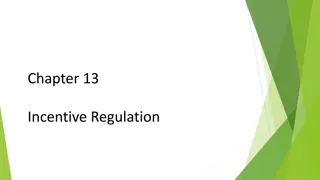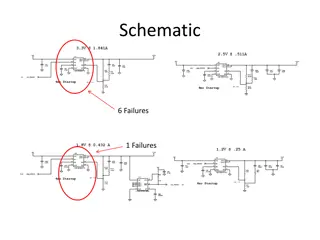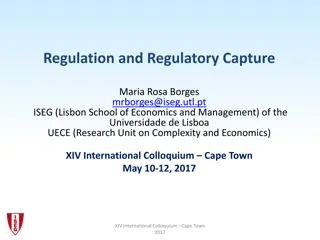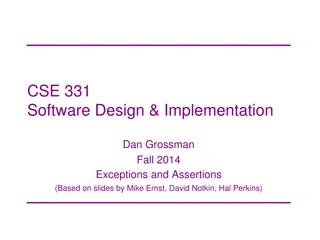Insights on Regulation, Market Failures, and Capture Theory
Disciplined monopolies internalize externalities and enhance social welfare, but small groups with large potential benefits often drive regulation for self-interest. Capture theory suggests regulatory capture by firms over time, leading to favoritism and high rates of return for regulated industries despite market competitiveness. Politicians may divert profits in regulated industries, explaining cross-subsidization. There are also perplexing instances where firms oppose regulations they don't want.
Download Presentation

Please find below an Image/Link to download the presentation.
The content on the website is provided AS IS for your information and personal use only. It may not be sold, licensed, or shared on other websites without obtaining consent from the author.If you encounter any issues during the download, it is possible that the publisher has removed the file from their server.
You are allowed to download the files provided on this website for personal or commercial use, subject to the condition that they are used lawfully. All files are the property of their respective owners.
The content on the website is provided AS IS for your information and personal use only. It may not be sold, licensed, or shared on other websites without obtaining consent from the author.
E N D
Presentation Transcript
Discipline Monopolies Internalize Externalities Public Goods (i.e. Air Pollution, Highway Safety) Regulation shows up where the public demands, and public demand is driven by the opportunity for net welfare gains Social welfare can be enhanced or maximized by a well-informed social planner
Small groups with large potential benefits will organize more readily than small groups with small and diffuse benefits. E.g. sugar producers versus sugar consumers. Politicians respond to incentives->theory of regulation.
Capture theory (Stigler): Even when regulation is begun on behalf of the public interest over time firms capture the regulatory process and bureaucracy Evidence supporting the capture theory of regulation: revolving door deals - high-level regulators and other officials leave government and find high-level jobs in the same industry that they had been responsible for regulating.
Government has a monopoly on the "supply" of regulation Regulation protects incumbent firms from price competition and prevents entry into profitable markets Private companies compete for regulation Intention to correct market failures does not prevent natural evolution to serve customer those who are actually paying for regulation Firms pay a lot to their regulators i.e. lobbying KEY: Capture theory predicts regulated firms will have higher rates of return than unregulated firms
Consider some industries that are or have been highly regulated: Airlines Trucking Taxi Service Farming All of these industries (with pos. exception of airlines) are highly competitive! Where is the market failure?
Doesnt explain cross-subsidization in regulated industries A politician can divert some of the profits from the regulation to favored consumers, at the expense of regulated firms. More on this later Doesn t explain the large number of regulations that firms explicitly do not want, and spent a lot of capital trying to prevent or obstruct
Note that beneficiaries of regulation are not simply big business E.g. (some) farmers, truckers, taxi service, barbers, lawyers, physicians (occ. licensing). Note also that farmers, truckers, taxi service etc. are not small groups; hence more is involved than the sugar lobby story. Olson story of small, organized groups versus large, disorganized groups cannot be the whole story. How do politicians trade off numbers/votes and monetary support? What happens when two organized groups have conflicting interests?
Assumptions Regulation is supplied by utility-maximizing politicians and regulators in response to the demand for regulation by interest groups. Those who control regulatory policy do so to maximize political support. Political support comes in the form of votes or campaign contributions.
Consider a regulator such as an electricity regulator that sets a rate, R (more generally the regulator has influence over a pRice.) Consumers want low R but the regulated firm wants high profits, ?. The politicians/regulators face a trade-off. If they allow higher profits, they gain political support from firms they regulate but lose support from consumers and vice-versa.
Consider two industries with Demand elastic and inelastic. Notice that for the same increase in price (the same R) which upsets consumers the regulated industry gets more profit when Demand is inelastic. Benefit-cost ratio for regulators is higher when demand is more inelastic therefore more likely that inelastic demand industries are regulated. Price Profits Dinelastic Regulated Price MC Profits Delastic Delastic Dinelastic Quantity
A politician can divert some of the profits from the regulation to favored consumer or other groups. E.g. prior to Amtrak one of the conditions of railroad regulation was the passenger rail would be subsidized by the railroad firms. Electricity regulation may lead to cross-subsidies to specific customers such as rural customers. Even though the rural customers may not be organized the politician cares about votes and makes sure the consumers know who is helping them (politician substitutes for organization).
A politician wants to diversify, to give wealth transfers to different groups for the same reason consumers spread their purchase over many goods diminishing marginal returns. Marginal Utility Marginal Political Support Apples Wealth transfers from politicians
Monopoly Price Regulated Price MC Demand MR
The trade-off between R and profits is illustrated by the iso-political support function. The iso-political support function illustrates all combinations of R and ? that yield equal political support.
M3 M2 M1 Note:M3is preferred to M2, which is preferred to M1 2 1 0 R2 R1 Utility Rates per KWH Hat tip for some slides to Christopher Brown.
M3 M2 M1 Profit function max 1 0 RM RC R* Utility Rates per KWH
Regulators captured by consumers Implication: Industries most likely to be regulated are either relatively competitive (agriculture, taxis,etc) or relatively monopolistic (network industries ). MC Stigler solution Regulators captured by regulated industry max MF Profit function 0 RM R, Utility Rate RC
Suppose profit hill falls (e.g. increased in fixed cost). In monopoly equilibrium, monopolist would take the entire hit. In regulated equilibrium note that profit falls by less because R increases. The regulator spreads the hit across consumers and producers to maximize political support. M2 M1 1 2 0 RM RC R* Utility Rates per KWH R2*
The political pursuit of profit also called rent seeking leads to wasteful expenditures that eat into the profit. The rents are eroded. Profit MC Demand MR
The Civil Aeronautics Board (CAB) extensively regulated airlines in the U.S. from 1938 to 1978. No firm could enter or exit the market, change prices, or alter routes without permission from the CAB. The CAB kept prices well above market levels, sometimes even denying requests by firms to lower prices! The rents, however, were eroded. Competition in quality Nice meals Wide seats Under-booking Unions
M2 M1 Profit function 1 0 RM RC R* Utility Rates per KWH
